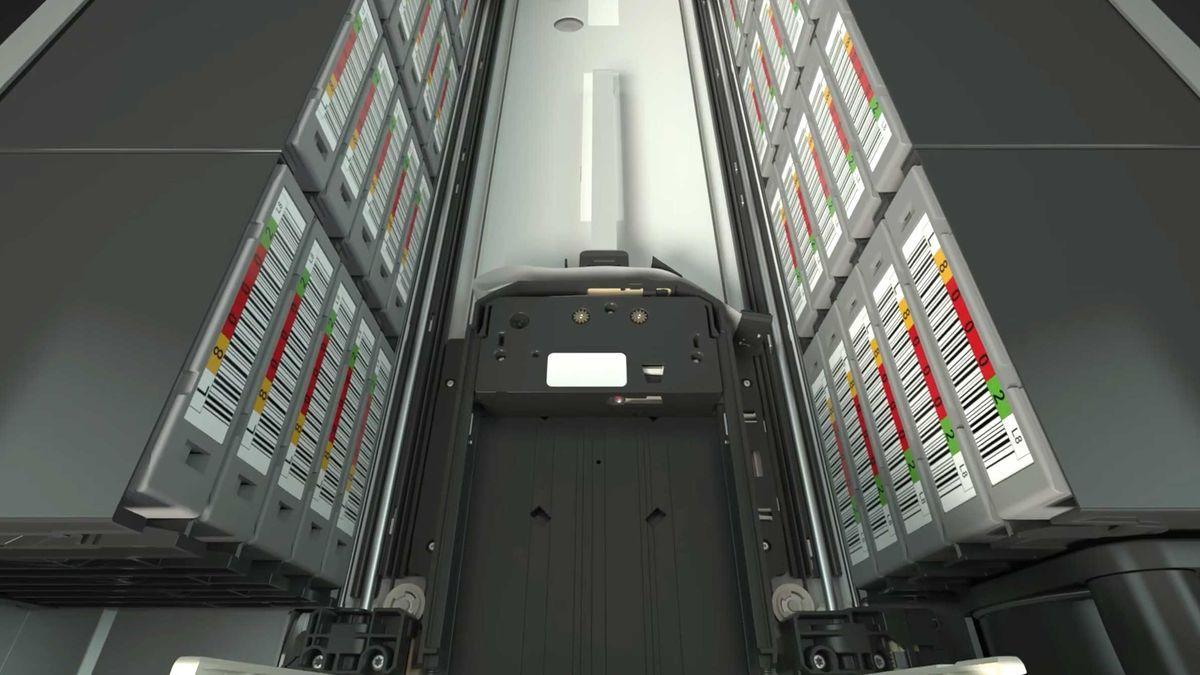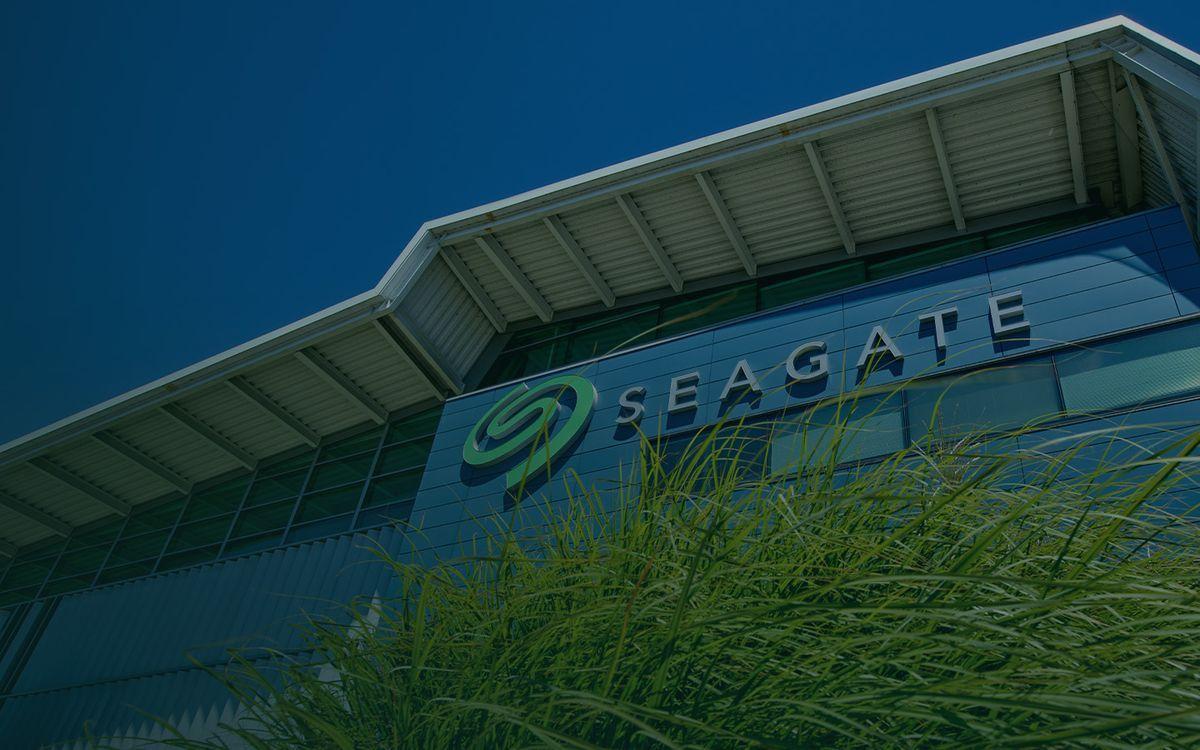LTO Tape Storage Thrives in AI Era Despite Cost Concerns
3 Sources
3 Sources
[1]
Months after Elon Musk's DOGE crusade to wipe it out, LTO tape storage is bigger than ever -- a record 176.5 exabytes shipped in 2024, the fourth consecutive year of growth
Perhaps the U.S. Department of Government Efficiency (DOGE) backed the wrong horse in dismissing tape as 'old technology.' Data seen by Tom's Hardware from the LTO Program Technology Provider Companies (TPCs) makes it clear that tape storage is a long way from becoming obsolete. In fact, the latest numbers from the TPCs (namely, HPE, IBM, and Quantum) suggest that tape storage shipments have broken records with their fourth consecutive year of growth. Going by the numbers, there were 176.5 exabytes of compressed LTO tape capacity shipped in 2024. Shipments were thus up 15.4% vs the prior year. The TPEs credit this continued growth of LTO to enterprises relying on tape to fuel their implementations of artificial intelligence and machine learning (AI/ML) technologies. Tape fills a significant niche in modern storage architectures, complementing the likes of disk, flash, and cloud solutions. Growth is also fuelled by the underlying qualities of LTO tape storage, such as cost-friendliness and longevity. "Setting a new growth record for the fourth year in a row, LTO tape technology continues to prove its longevity as a leading enterprise storage solution," said Bruno Hald, GM of Secondary Storage, Quantum. "Organizations navigating their way through the AI/ML era need to reconfigure their storage architectures to keep up, and LTO tape technology is an essential piece of the puzzle for those seeking a cost-friendly, sustainable, and secure solution to support modern technology implementation and the resulting data growth." LTO-10 is the latest format specification for LTO Ultrium tape drives and media. It can reportedly "provide the same blazing speed as LTO-9 with higher capacity and density (30 TB per cartridge, up to 75 TB compressed), [and] quantum-safe encryption." Roadmaps we have seen extend to LTO-14, which offers up to a gargantuan 576TB per cartridge, which can fit up to 1,440TB compressed. Any industry enjoying a 15.4% uplift over the prior year could easily be framed as one that is thriving. However, tape seems to have negative connotations, principally that of being 'old technology' and thus ripe for replacement with something more 'modern. This feeling that tried, trusted, and established equals outdated seems to have been the driving force behind the U.S. government's DOGE triumphantly crowing that it "just saved $1M per year by converting 14,000 magnetic tapes (70-year-old technology for information storage) to permanent modern digital records," back in April. A community note quickly popped up to counter DOGE's assertions, noting that "despite its age, magnetic tape is still highly favorable for long-term, static data archives." Cost-effectiveness measures like TCO, longevity, offline security, and high capacity all remain in the format's favor in 2025.
[2]
New data shows tape is still not dead
Shipments of tape storage media increased again in 2024, according to HPE, IBM, and Quantum - the three companies that back the Linear Tape-Open (LTO) Format. The three companies on Tuesday claimed they shipped 176.5 Exabytes worth of tape during 2024, a 15.4 percent increase on 2023's 152.9 Exabytes. For those of you who stopped paying attention to tape a while back and need a refresher, LTO is an open tape format co-developed by the aforementioned companies, who all produce drives that can read and write the tapes. Sony and Fujifilm make LTO tapes. LTO tapes ship in cartridge that are always the same size. Every few years the LTO consortium announce a next-generation spec that usually doubles the capacity of each cartridge. LTO drives can read cartridges from the two previous generations and write to one previous generation. Drives built to work with the current ninth-gen spec, which offers 18 terabytes of uncompressed capacity on each tape, can therefore write the 12TB eighth-gen tapes and read seventh-gen tapes to access the measly 6TB each can contain. LTO 10 debuts this year, and promises 36TB per tape. The org's roadmap extends to LTO 14, which it predicts will pack 576TB on each tape. If the LTO team sticks to its usual four-yearly release cadence, LTO 14 will arrive around 2040. At which point tape still won't be dead. Tape enthusiasts point to its low cost per terabyte, and ability to retain data while offline and unpowered as among its virtues, and reasons it remains relevant despite its slow data transfer speeds and hard disk capacity reaching 30TB. In canned quotes provided by LTO, Quantum's general manager for secondary storage Bruno Hald said those qualities remain relevant as organizations assemble the vast collections of data needed to power AI applications. "Organisations navigating their way through the AI/ML era need to reconfigure their storage architectures to keep up, and LTO tape technology is an essential piece of the puzzle," he said. Analyst firm IDC's research veep for infrastructure software platforms Phil Goodwin offered similar sentiments. "Continued growth in LTO tape shipments shows the important role that tape plays in modern data architectures, especially as companies deal with rapidly growing amounts of data," he said. "In fact, tape's unique combination of scalability, cost-efficiency, and cyber resilience makes it a valuable component for enterprises seeking secure, sustainable long-term data storage."
[3]
Tape demand stays strong, but its affordability is eroded by costly LTO-10 cartridges
LTO-10 costs rise threatening tape's long-standing affordability advantage The LTO Program, backed by HPE, IBM, and Quantum, has reported a new high in tape capacity shipments, with 176.5 Exabytes of LTO media shipped in 2024. The announcement says this marks the fourth straight year of growth for the tape format, driven by expanding hybrid cloud strategies and the demands of AI and machine learning infrastructure. The figure, though, comes with an asterisk. The 176.5EB is a compressed capacity total, not the raw figure. Based on the LTO program's standard 2.5:1 compression ratio, the uncompressed total is closer to 70.6EB. That's the actual amount of real data the tapes could hold if compression doesn't apply. Since compression depends on data type - some files compress well, others like video or encrypted data barely at all - these numbers can be misleading in terms of practical storage delivered. "Setting a new growth record for the fourth year in a row, LTO tape technology continues to prove its longevity as a leading enterprise storage solution," said Bruno Hald, General Manager, Secondary Storage, Quantum. "Organizations navigating their way through the AI/ML era need to reconfigure their storage architectures to keep up, and LTO tape technology is an essential piece of the puzzle for those seeking a cost-friendly, sustainable, and secure solution to support modern technology implementation and the resulting data growth. We look forward to introducing the next iteration of LTO tape technology this year to bring enhanced storage capabilities to the enterprise," he added. Those "cost-friendly" advantages are coming under pressure, however. LTO-10, the latest generation of tape, carries a high price tag, with cartridges selling for between $275 and $315. That puts it just over 2x the cost per (native) terabyte compared to earlier versions, and while the capacity of LTO-10 is higher, the speed remains the same as LTO-9. Phil Goodwin of IDC sees LTO as part of a broader strategy. "Tape's unique combination of scalability, cost-efficiency, and cyber resilience makes it a valuable component for enterprises," he said. While tape still offers long-term value, especially as part of a tiered storage model, the price of LTO-10 may slow adoption. For many businesses, spending hundreds per cartridge could be difficult to justify when lower-cost options like cloud cold storage continue to expand. The LTO Program emphasizes tape's offline resilience and low energy draw, but its strongest selling point has always been price. At $315 for 30TB native storage, that's a tougher story to tell.
Share
Share
Copy Link
LTO tape storage shipments hit a record 176.5 exabytes in 2024, marking four years of consecutive growth. The surge is attributed to AI and ML demands, but rising costs of new LTO-10 cartridges pose challenges to its affordability advantage.
LTO Tape Storage Reaches New Heights
In a surprising turn of events, Linear Tape-Open (LTO) tape storage has demonstrated remarkable resilience and growth in the face of modern digital storage solutions. According to data from the LTO Program Technology Provider Companies (TPCs) - HPE, IBM, and Quantum - tape storage shipments have broken records for the fourth consecutive year
1
.In 2024, a staggering 176.5 exabytes of compressed LTO tape capacity were shipped, marking a 15.4% increase from the previous year
2
. This growth comes despite earlier dismissals of tape as 'old technology,' including a notable critique from the U.S. Department of Government Efficiency (DOGE).Driving Factors Behind Tape's Resurgence
The continued growth of LTO tape storage is attributed to several factors:
-
AI and Machine Learning Demands: Enterprises are increasingly relying on tape to fuel their AI and ML implementations, which require vast amounts of data storage
1
. -
Cost-effectiveness and Longevity: Tape storage remains an attractive option due to its low cost per terabyte and ability to retain data while offline and unpowered
2
. -
Complementary Role: Tape fills a significant niche in modern storage architectures, complementing disk, flash, and cloud solutions
1
.
LTO-10: The Latest in Tape Technology

Source: Tom's Hardware
The LTO-10 format, the latest specification for LTO Ultrium tape drives and media, offers impressive capabilities:
- Capacity of 30 TB per cartridge (up to 75 TB compressed)
- Quantum-safe encryption
- Same transfer speed as LTO-9
1
Future roadmaps extend to LTO-14, promising up to 576TB per cartridge (1,440TB compressed)
1
.Related Stories
Challenges and Controversies
Despite its growth, tape storage faces some challenges:
-
Perception Issues: Tape is often perceived as outdated technology, despite its continued relevance in data storage
1
. -
Rising Costs: LTO-10 cartridges are priced between $275 and $315, which is about twice the cost per terabyte compared to earlier versions
3
. -
Misleading Statistics: The reported 176.5EB shipment figure is based on compressed capacity. The actual uncompressed total is closer to 70.6EB
3
.
Industry Perspectives
Experts in the field remain optimistic about tape's role in modern data storage:
Bruno Hald, GM of Secondary Storage at Quantum, stated, "LTO tape technology continues to prove its longevity as a leading enterprise storage solution"
1
.Phil Goodwin, research VP at IDC, emphasized tape's "unique combination of scalability, cost-efficiency, and cyber resilience"
2
.As organizations navigate the AI/ML era and grapple with rapidly growing data volumes, LTO tape technology continues to play a crucial role in storage architectures. However, the rising costs of new LTO-10 cartridges may pose challenges to its long-standing affordability advantage, potentially impacting its adoption in the face of expanding cloud cold storage options.
References
Summarized by
Navi
[2]
Related Stories
Recent Highlights
1
Google launches Gemini 3 Flash as default AI model, delivering speed with Pro-grade reasoning
Technology

2
OpenAI launches GPT Image 1.5 as AI image generator war with Google intensifies
Technology

3
OpenAI launches ChatGPT app store, opening doors for third-party developers to build AI-powered apps
Technology








